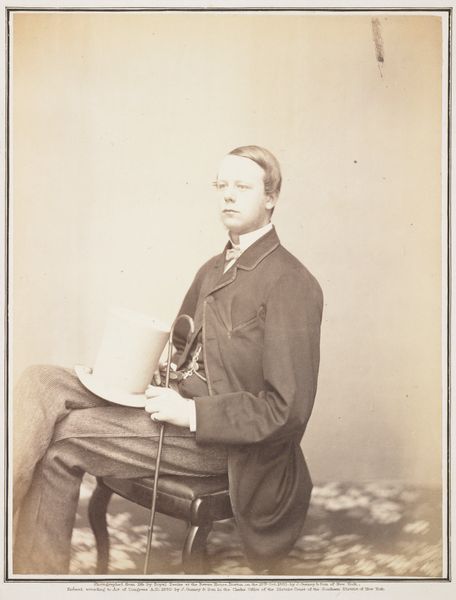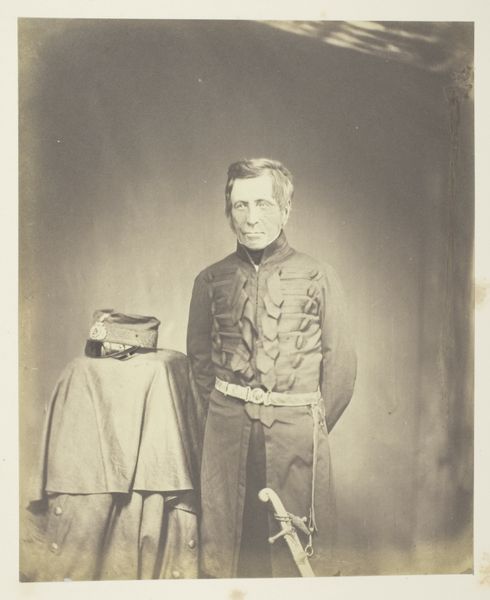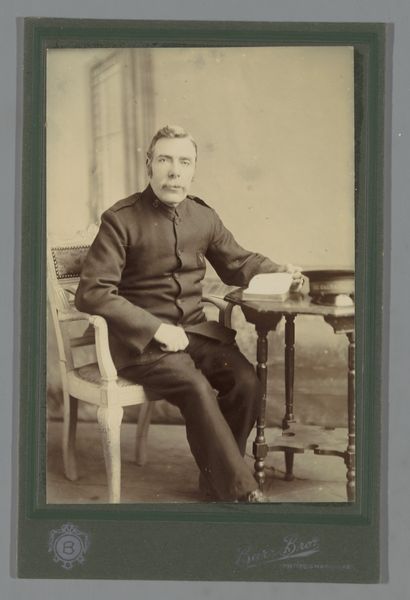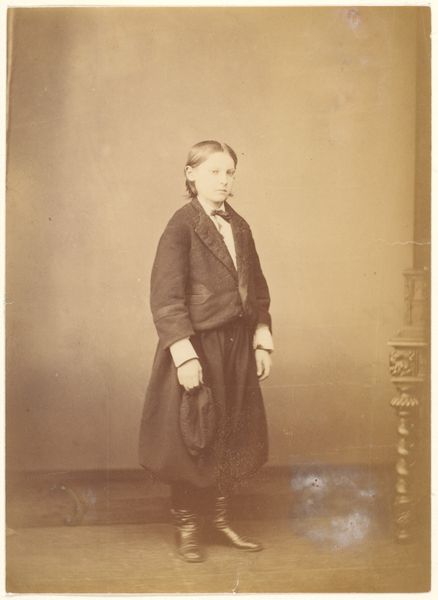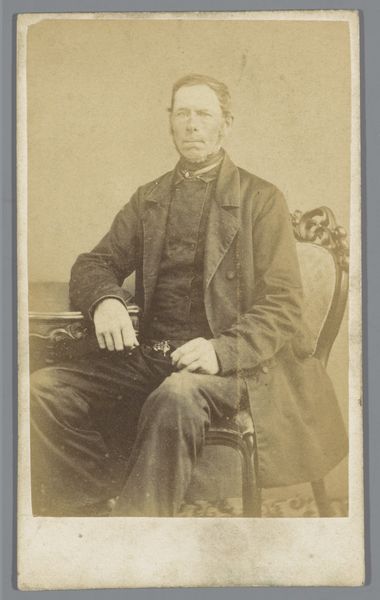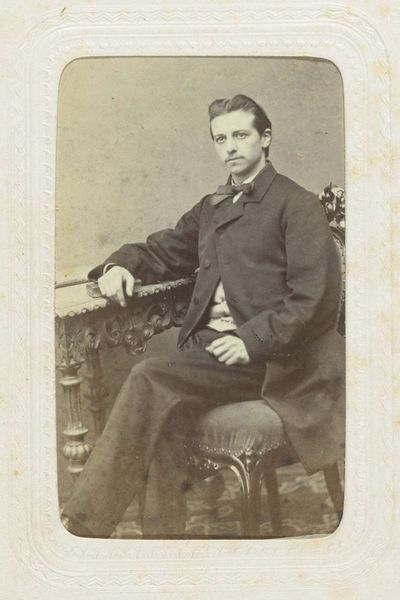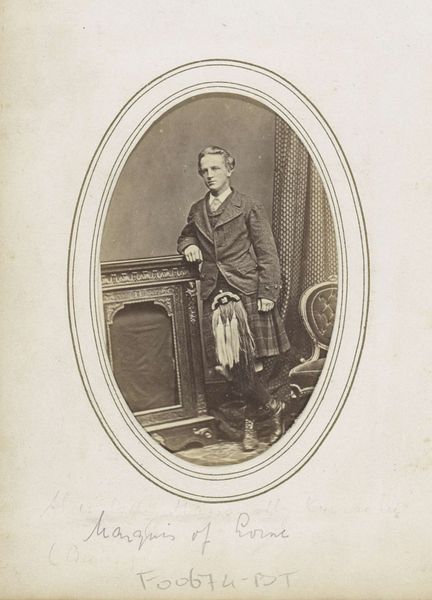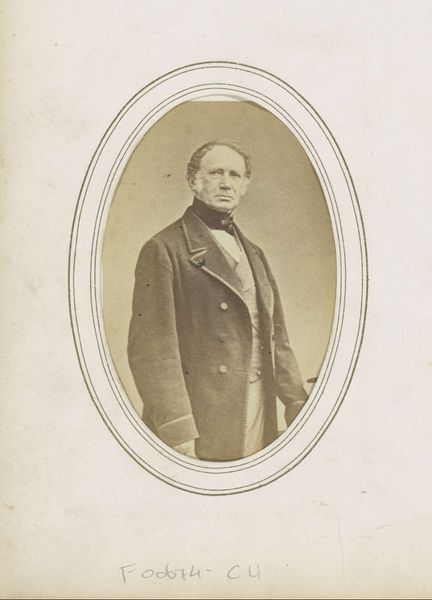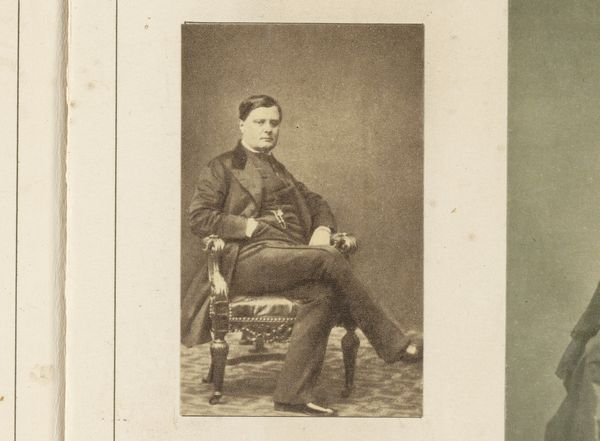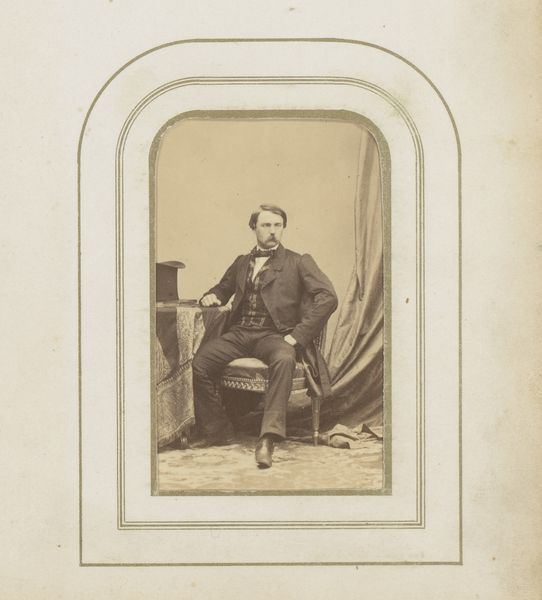
Sir Jno Fox Burgoyne (1782-1871), Field Marshal, Taken at the Crimea 1855
0:00
0:00
Dimensions: 24.1 × 17.5 cm (image/paper); 30.8 × 23.1 cm (mount)
Copyright: Public Domain
Editor: Here we have Roger Fenton's 1855 gelatin-silver print, "Sir Jno Fox Burgoyne (1782-1871), Field Marshal, Taken at the Crimea", currently held at the Art Institute of Chicago. There's a striking sense of quiet dignity about him, even amidst what must have been a brutal war. What can you tell me about it? Curator: Look closely at the materiality. This isn't just about capturing Burgoyne's image. Fenton, in using the wet collodion process in a warzone, performs labor itself, negotiating the chemicals, the light, the very portability of his darkroom. The image's muted tones result from specific chemical reactions with the silver. Editor: So, the photograph itself is evidence of that work and the conditions under which it was made? Curator: Precisely. And consider the sitter. The field marshal isn't presented heroically posed on a battlefield. The careful staging in Fenton's photographic “studio,” set within the Crimean landscape, almost domesticates the war effort. He holds his sword almost casually. Editor: It's not romanticized, like a traditional war painting. Curator: It's almost anti-heroic, and that’s tied to the means of production. Photography, unlike painting, held a perceived truth to reality that influenced a shift away from grand, fictionalized depictions of war, which brings the social cost and means to the forefront of artistic depictions. Where would the artist have procured these materials and how were they transported? These considerations, for me, become central to our understanding. Editor: I hadn't considered how much the photographic process itself shapes the final image and our understanding of the subject. It makes it feel more… real, somehow. Curator: Exactly! And this "realness," crafted through very specific materials and methods of production, speaks volumes about the changing perception of war and its portrayal during that era. Editor: This has really shed a different light on it for me!
Comments
No comments
Be the first to comment and join the conversation on the ultimate creative platform.
